- Home
- Oliver Sacks
Seeing Voices Page 15
Seeing Voices Read online
Page 15
But if thought transcends language, and all representational forms, nonetheless it creates these, and needs these, for its advancement. It did so in human history, and does so in each of us. Thought is not language, or symbolism, or imagery, or music—but without these it may die, stillborn, in the head. It is this which threatens a Joseph, a d’Estrella, a Massieu, an Ildefonso; which threatens any deaf child, or any child whatever, not given full access to language and other cultural tools and forms.
3. A. R. Luria and F. la. Yudovich describe identical twins with a congenital language retardation (due to cerebral problems, not to deafness). These twins, although of normal intelligence, and even bright, functioned in a very primitive way—their play was repetitive and uncreative. They had extreme difficulty thinking out problems, conceiving complex actions or plans; there was, in Luria’s words, “a peculiar, insufficiently differentiated, structure of consciousness, [with inability] to detach word from action, to master orienting, to plan activity … to formulate the aims of activity with the aid of speech.”
When the twins were separated, and each acquired a normal language system, “the whole structure of the mental life of both twins was simultaneously and sharply changed … and after only three months we observed the beginnings of meaningful play … the possibility of productive, constructive activity in the light of formulated aims … intellectual operations which shortly before this were only in an embryonic state.…”
All of these “cardinal improvements” (as Luria puts it), improvements not only in intellectual functioning but in the entire being of the children, “we could only attribute to the influence of the one changed factor—the acquisition of a language system.”
Luria and Yudovich also comment about the disabilities of the languageless deaf:
The deaf mute who has not been taught to speak … does not possess all those forms of reflection which are realized through speech.… [He] indicates objects or actions with a gesture; he is unable to form abstract concepts, to systematize the phenomena of the external world with the aid of abstracted signals furnished by language but which are not natural to visual, practically acquired experience.
One must regret that Luria, apparently, had no experience with deaf people who had acquired fluent language, for he would have provided us with incomparable descriptions of the acquisition of conceptual and systematizing power with language.
Addendum (1990): I have recently learned that, although he never published on the subject, Luria did have a great deal to do during the 1950s, with deaf (and deaf-blind) children, and the role of sign language in their education and development. This represented, in a way, a return to the “defectology” which he and Vygotsky had pioneered in the 1920s and 1930s, and which he was later to explore in his rehabilitative approaches to the neurologically injured.
4. Note 1990: Recently, while in Italy, I encountered a nine-year-old gypsy boy, Manuel, who had been born deaf, but had never met other deaf people, and (with his itinerant life) had never received any education. He was quite languageless, with neither Sign nor Italian, but bright, affectionate, and emotionally normal—he was much loved by his parents and older siblings, and entrusted by them with all sorts of tasks. When he entered the via Nomentana school for the deaf, there was doubt as to whether he would acquire language fluently at his age. But he has done brilliantly, and in three months has already acquired fair Sign and fair Italian, loves both languages, loves communicating, and is full of questions and curiosity and intellectual vitality. He has done much better than poor Joseph, whose acquisition of language has been slow and laborious.
Why the difference? Manuel is clearly a very bright child indeed, and Joseph one of ordinary (though not subnormal) intelligence; but, perhaps more to the point, Manuel was always loved, always involved, always treated as normal—he was completely a part of his family and community, who saw him as different but never as alien—whereas Joseph was regarded, and often treated, as autistic or retarded. Manuel was never left out, never felt left out; he did not suffer, as Joseph did, from an annihilating sense of left-outness and isolation.
This emotional factor is probably of great importance in determining whether or not language acquisition will be successful near or after the “critical age.” Thus Ildefonso was successful, but three other languageless deaf adults whom Susan Schaller encountered had been so damaged emotionally by isolation (and in one case institutionalization as well) that they had become withdrawn and inaccessible, had turned against communication, and were no longer open to any attempts to establish formal language.
5. Massieu’s autobiography is reprinted in Harlan Lane’s The Deaf Experience, pp. 76–80, and Sicard’s book is also excerpted here, pp. 83–126.
6. In 1977 S. Goldin-Meadow and H. Feldman began videotaping a group of profoundly deaf preschool children who were isolated from other signers, because their parents preferred them to learn speech and lip-reading. Despite this isolation, and their parents’ strong encouragement to use speech, the children began to create gestures—first single gestures, then strings of gestures—to represent people, objects, and actions. This is what happened with Massieu and others in the eighteenth century. The “home signs” that Massieu developed, and that these isolated preschool children developed, are simple gestural systems that may have a rudimentary syntax and morphology of a very limited sort; but they do not make the transition, the leap into a full grammar and syntax, such as occurs when a child is exposed to Sign.
Similar observations have been made of isolated deaf adults—there was one such deaf man in the Solomon Islands, the first in twenty-four generations (Kuschel, 1973); they too will invent gestural systems, with a very simple syntax and morphology, by which they can communicate basic needs and feelings to their neighbors—but cannot by themselves make the qualitative leap from such a gestural system into a complete, fully grammaticized linguistic system.
We see here, as Carol Padden and Tom Humphries point out, poignant attempts to invent a language within one lifetime. And, essentially, this cannot be done, because it requires a child, and a child’s brain, exposed to a natural language, to create and transmit, to evolve, a natural language. Thus sign languages are historical creations that require, at the very least, two generations, for their genesis. Sign may become still richer, evolve, with several generations, as was the case on Martha’s Vineyard, but two generations are enough.
We see the same situation with speech. Thus when linguistically different communities meet and have to communicate, they develop an improvised, grammarless pidgin. Grammar only appears in the next generation, when the children bring it to their parents’ pidgin, creating a rich and fully grammaticized creole. This at least is the thesis of the linguist Derek Bickerton (see Restak, 1988, pp. 216–217). Thus, a deaf Adam and Eve would improvise signs but lack language; a true, grammatical sign language would evolve only with the development of their children, Cain and Abel.
It seems clear that grammatical potential is present, even explosively present, in every child’s brain, and that it will leap out and actualize itself given the least opportunity. This is particularly clear in the case of deaf children who have been isolated, but who are finally, serendipitously, exposed to Sign. In this instance, even the briefest exposure to a fully grammaticized sign language can serve to initiate a huge and rapidly spreading change. A glimpse of a subject/object usage, or a sentence construction, may ignite the latent grammatical power of the brain and produce a sudden fulguration, and a very rapid conversion from a gestural system to a true language. Grammar can spread, among such children, like a contagion. It must take a very exceptional degree of isolation, indeed, to prevent this happening.
7. Massieu’s enthralled naming of trees and other plants helped to define them in unique perceptual categories (“this is an oak, this is ‘oakishness’!”), but not to define them in a more conceptual way (“Ha, a gymnosperm!” or “Ha, another crucifer!”). And many of these “natural” categories, of
course, were already familiar to him. There was much more difficulty with unfamiliar objects, which had not previously been part of the perceptual world. This is hinted at in Massieu, and absolutely clear with the Wild Boy, Victor. Thus when Itard, Victor’s teacher, taught him the word “book,” this was first taken to refer to a particular book, and the same failure occurred with other words, all of which he understood to name some particular thing, not a category of things. Sicard introduced Massieu, at first, to images, and thence conducted him to (what Lévy-Bruhl, in his studies of primitive thinking, calls) “image-concepts.” Such concepts are necessarily particular, because one cannot have a generic image.
8. L. S. Vygotsky was born in Byelorussia in 1896, and as a very young man published a remarkable book on the psychology of art. He then turned to systematic psychology, and in the ten years before his death (from tuberculosis, at the age of 38) produced a unique corpus of work, which was seen by most of his contemporaries (including Piaget) as showing outstanding originality, indeed genius. Vygotsky saw the development of language and mental powers as neither learned, in the ordinary way, nor emerging epigenetically, but as being social and mediate in nature, as arising from the interaction of adult and child, and as internalizing the cultural instrument of language for the processes of thought.
His work aroused great suspicion among Marxist ideologues, and Thought and Language, which was published posthumously in 1934, was banned and suppressed a couple of years later, as “anti-Marxist,” “anti-Pavlovian,” and “anti-Soviet.” His work and theories could no longer be mentioned publicly, but were treasured by his pupils and colleagues—A. R. Luria and A. N. Leont’ev, above all. In later life, Luria wrote that meeting a genius such as Vygotsky, and getting to know him, was the most crucial event of his life—and he often saw his own work as “nothing more than a continuation” of Vygotsky’s. It was largely through Luria’s courageous efforts (for he too had been banned and forced into “internal exile” at different periods) that Thought and Language was republished (in Russian and German) in the late 1950s.
It was published in English, finally, in 1962, with an introduction by Jerome Bruner. It decisively influenced Bruner’s own work—his books of the 1960s (most notably Towards a Theory of Instruction) are powerfully Vygotskian in tone. Vygotsky’s work was so ahead of its time in the 1930s that one of his contemporaries described him as “a visitor from the future.” But in the past twenty years he has provided, increasingly, the theoretical underpinning for a variety of important studies on the development of language and mental processes (and thus the education) of the child, including those of Schlesinger and the Woods, which focus on deaf children. It is only now, in the late 1980s, that Vygotsky’s collected works are being made available in English, again under the general editorship of Bruner.
Addendum (1990): It is only now that Vygotsky’s collected essays on “Defectology,” including his crucial 1925 essay on special education for the deaf, are published in English (see Vygotsky, 1991 and Knox, 1989). “Defectology,” it must be said first, is not only a hideous word, but a misleading one, for it is not defects that it is concerned with, but the very opposite—adaptations, compensations (perhaps indeed it should be called “intactology”). Vygotsky was passionately opposed to the evaluation of handicapped children in terms of their defects or deficits, their “minuses”; he valued them instead for their intactnesses, their “pluses.” He did not see them as defective, but different: “A handicapped child represents a qualitatively different, unique type of development.” And it was this qualitative difference, this uniqueness, Vygotsky felt, that any educational or rehabilitative enterprise must address: “If a blind or deaf child achieves the same level of development as a normal child,” he writes, “then the child with a defect achieves this in another way, by another course, by other means; and, for the pedagogue, it is particularly important to know the uniqueness of the course along which he must lead the child. This uniqueness transforms the minus of the handicap into the plus of compensation.”
Development of higher psychological functions, for Vygotsky, is not something which occurs “naturally,” automatically—it requires mediation, culture, a cultural tool. And the most important such cultural tool is language. But cultural tools and languages, he argues, have been developed for the “normal” person, the person with all his sense organs, his biological functions, intact. What then will be best for the handicapped, the different person? The key to his development will be compensation—the use of an alternative cultural tool. Thus Vygotsky comes to the special education of the deaf: the alternative cultural tool, for them, is sign language—sign language which has been created for them and by them. Sign language addresses the functions, the visual functions, that are still intact; it is the most direct way of reaching deaf children, the simplest means of allowing their full development, and the only one that respects their difference, their uniqueness.
9. Kaspar Hauser, after his release from years of languagelessness in a dungeon (described later in this chapter) showed an identical tendency to use such metaphors at first, toward a sort of natural, naïf, childlike poetry … which his teacher, von Feuerbach, demanded he “abandon.” One sees in the history and evolution of many peoples and cultures such a “primitive” poetic language at first, subsequently displaced by more analytic, abstract terms. One sometimes feels that the loss may be as great as the gain.
Lévy-Bruhl, similarly, describes how the Tasmanians “had no words to represent abstract ideas … could not express qualities such as hard, soft, round, tall, short, etc. To signify hard they would say, like a stone; for tall, big legs; round, like a ball; like the moon; and so on, always combining their words with gestures, designed to bring what they were describing before the eyes of the person addressed.” One is irresistibly reminded here of Massieu as he learned language—of how he would say, “Albert is bird,” “Paul is lion,” before he acquired, or turned to, the use of generic adjectives.
10. Massieu’s acquiring the idea of a square, through the medium of a common word, a symbol for it, was (consciously and unconsciously) Sicard’s answer to Hobbes. For Hobbes had argued, a century and a half earlier, that though a deaf person might work out that the angles of a triangle were the sum of two right angles, and even follow Euclid’s proof of this, he could not conceive this as a universal proposition about triangles, because he lacked a word or symbol for “triangle.” Lacking common nouns, lacking abstract language, Hobbes thought, the deaf could not generalize. Perhaps, said Sicard; but if they use common nouns, use abstract language, use sign language, they can generalize as well as anyone else. One is reminded, as one reads Sicard, of Plato’s theory of ideas and education, especially in the Cratylus and Meno. First, says Plato, one must see actual chairs or squares—all sorts of objects with squareness (or any other quality)—only then can the idea of squareness come, the archetypal or ideal square of which all squares are merely copies. In the Meno an ignorant and illiterate youth, with no idea of geometry, is gradually inducted into the truths of geometry, gradually drawn to higher and higher levels of abstraction, through the questions of a teacher who is always a stage ahead and who, by the form of his question, allows the pupil to advance to his stage. Thus, for Plato, language, knowledge, epistemology, is innate—all learning is essentially “reminiscence”—but this can only occur with another, a mediator, in the context of a dialogue. Sicard, a born teacher, was not really instructing Massieu; he was drawing him out, educing him, by means of such a dialogue.
11. Anselm von Feuerbach’s original account was published in 1832, and translated into English—as Caspar Hauser—in 1834. It has been the subject of innumerable essays, articles, books; of a film by Werner Herzog; and of a remarkable psychoanalytic essay, by Leonard Shengold, in Halo in the Sky.
12. But then again, this may sometimes not happen. A modern day wild child, Genie, was found in California in 1970; she had been imprisoned at home (by her psychotic father) and not spoken to s
ince infancy (see Curtiss, 1977). Despite the most intensive training, Genie acquired only a little language—a number of words for common objects, but no ability to ask questions and only the most rudimentary grammar. Why did Kaspar do so well, and Genie so badly? It may have been, simply, that Kaspar had already acquired some language, the linguistic competence of a three-year-old, before he was locked up, whereas Genie had been totally isolated since the age of twenty months. This one year of language, indeed, can make all the difference: one sees this with children who have been suddenly deafened at, say, thirty-six months rather than twenty-four months.
13. In January 1982, a New York State court awarded $2.5 million to “a seventeen-year-old deaf boy who had been diagnosed an ‘imbecile’ at two years of age and put into an institution for the mentally retarded until he was almost eleven years old. At that age he was transferred to another institution, where a routine psychological examination revealed he was ‘at least of normal intelligence.’ ” This is reported by Jerome D. Schein (Schein, 1984). Such cases may indeed be far from uncommon—an almost identical one is reported in The New York Times of December 11, 1988 (p. 81).
Addendum (1990): Such mistakes, incredibly, can happen in adult life too. Very recently, at a psychiatric hospital where I work, I saw a man who had become deaf at the age of thirty-eight, from an attack of meningitis. Suddenly he had found himself unable to hear, unable to understand what others were saying to him. He saw several physicians, none of whom, apparently, really took the time to listen to him or appreciate his situation. He was diagnosed as schizophrenic by one of them, as retarded by another. When I spent a little time with him, and wrote my questions out for him, it became obvious that he was neither—and that he did not need to be institutionalized but rather to be in school.
14. When I came to write of a set of twins who were calculating prodigies (“The Twins” in Sacks, 1985), and their extraordinary facility for numbers, their “numeracy,” I had to wonder whether there might not be in their brains “a deep arithmetic of the kind described by Gauss … as innate as Chomsky’s deep syntax and generative grammar.” When I heard of Ildefonso’s sudden understanding of numbers, his sudden “seeing” of arithmetical rules, I could not help thinking of the twins, and wondering whether he too was not possessed of an innate, organic arithmetic, suddenly kindled, or released, by a numerical stimulus.

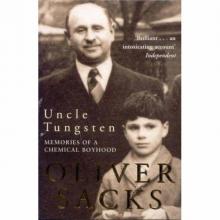 Uncle Tungsten
Uncle Tungsten Oaxaca Journal
Oaxaca Journal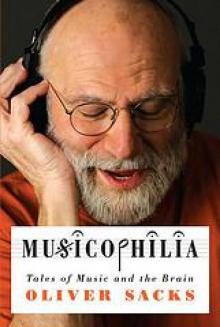 Musicophilia
Musicophilia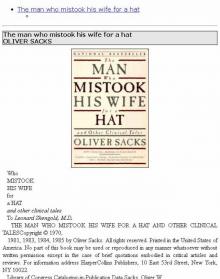 The man who mistook his wife for a hat
The man who mistook his wife for a hat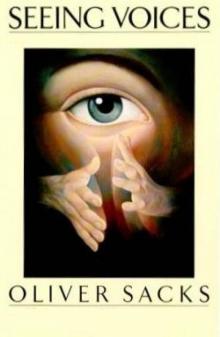 1989 - Seeing Voices
1989 - Seeing Voices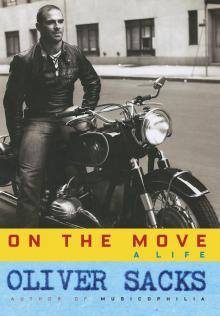 On the Move: A Life
On the Move: A Life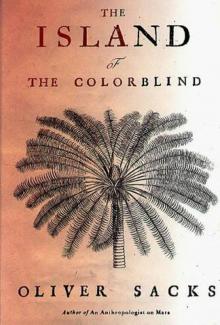 1996 - The Island of the Colorblind
1996 - The Island of the Colorblind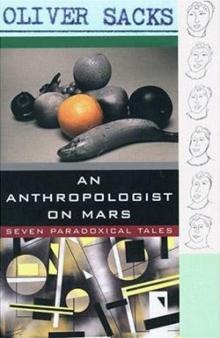 An Anthropologist on Mars: Seven Paradoxical Tales
An Anthropologist on Mars: Seven Paradoxical Tales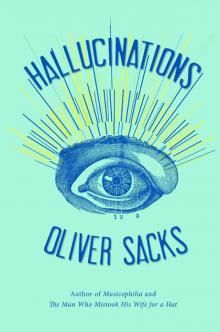 Hallucinations
Hallucinations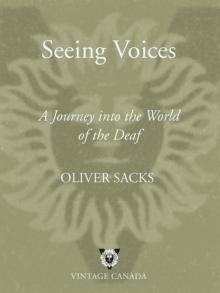 Seeing Voices
Seeing Voices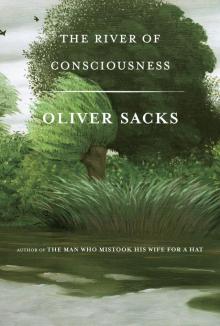 The River of Consciousness
The River of Consciousness Vintage Sacks
Vintage Sacks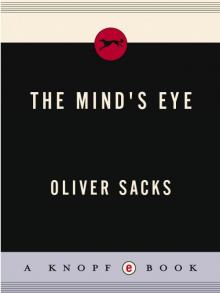 The Mind's Eye
The Mind's Eye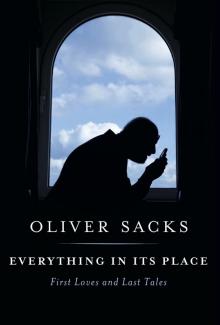 Everything in Its Place
Everything in Its Place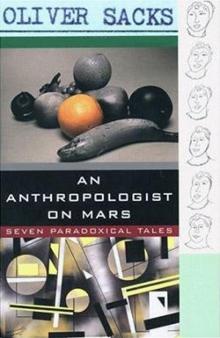 An Anthropologist on Mars (1995)
An Anthropologist on Mars (1995)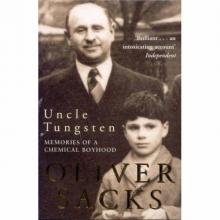 Uncle Tungsten: Memories of a Chemical Boyhood (2001)
Uncle Tungsten: Memories of a Chemical Boyhood (2001)